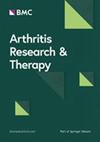Clinical and immunological biomarkers can identify proliferative changes and predict renal flares in lupus nephritis
IF 4.9
2区 医学
Q1 Medicine
引用次数: 0
Abstract
Kidney involvement is frequent in SLE, with proliferative lupus nephritis (LN) forms and nephritic flares being key predictors of poor outcomes. Conflicting results have been reported for anti-C1q antibodies among the serological markers. Our purpose was to assess the value of immunological tests (C3,C4 complement fractions, anti-DNA and antiC1q antibodies) in predicting histological classes and flares of lupus nephritis (LN). For histological class prediction, we evaluated the immunological tests performed on the day of kidney biopsy by linear and multiple regression analyses. For flare prediction, univariable and multivariable Cox analyses were made at baseline, 6, and 12 months. Of 61 participants in the study, 47 had proliferative (III, IV) and 14 non-proliferative LN (II, V) at kidney biopsy. In proliferative LN, anti-DNA (p = 0.0186) and anti-C1q antibodies (Ab) (p = 0.0050) were significantly higher, and serum C3 and C4 lower (p = 0.0026; p = 0.0212) compared to non-proliferative LN. At multiple regression analysis, the best association to differentiate proliferative from non-proliferative LN was the number of urinary erythrocytes (OR 3.2292; CI 1.2585–8.2858; p = 0.0148) and anti-C1qAb (OR 1.0288; CI 1.0016–1.0568; p = 0.0380). Of 53 patients evaluated for flare predictions, followed for 60.69 (37.20-78.704) months, 10 (18.86%) had a renal flare at 28.19 months (24.84–39.38, range:16.3–55.8) from therapy initiation. At univariable analysis, anti-C1qAb (p = 0.0340, p = 0.0005) and no-use hydroxychloroquine (p = 0.0313, p = 0.0276) predicted flares at baseline and six months. Anti-C1qAb (p = 0.0047), non-use hydroxychloroquine (p = 0.0252), anti-C1qAb ≥ 40UA (p = 0.0047), 24/h proteinuria (p = 0.0185), and proteinuria ≥ 0.5 g/day (p = 0.0216) predicted flares at 12 months. At multivariable analysis, anti-C1q > 40UA (OR 9.0721; CI 0.9146–42.9882; p = 0.0057) and non-use of hydroxychloroquine (OR 0.1742 CI 0.0445–0.6823; p = 0.0126) were the independent predictors of renal flares. Immunological tests can differentiate proliferative from non-proliferative LN, but anti-C1qAb and urinary erythrocytes had the best predictive power. Only persistent high anti-C1qAb at 1 year and non-use of hydroxychloroquine seem to predict renal flares.临床和免疫生物标志物可以识别狼疮性肾炎的增生性变化和预测肾脏耀斑
肾脏受累在SLE中是常见的,增生性狼疮肾炎(LN)形式和肾炎耀斑是不良预后的关键预测因素。在血清学标记物中,抗c1q抗体的结果相互矛盾。我们的目的是评估免疫测试(C3,C4补体分数,抗dna和抗1q抗体)在预测狼疮性肾炎(LN)的组织学分类和发作中的价值。为了预测组织学分类,我们通过线性和多元回归分析评估了肾活检当天进行的免疫学测试。对于耀斑预测,在基线、6个月和12个月进行单变量和多变量Cox分析。在这项研究的61名参与者中,肾活检显示47例为增生性LN (III、IV), 14例为非增生性LN (II、V)。在增生性LN中,抗dna (p = 0.0186)和抗c1q抗体(Ab) (p = 0.0050)显著升高,血清C3和C4降低(p = 0.0026;p = 0.0212)。在多元回归分析中,区分增殖性和非增殖性LN的最佳相关性是尿中红细胞的数量(OR为3.2292;可信区间1.2585 - -8.2858;p = 0.0148)和抗c1qab (OR 1.0288;可信区间1.0016 - -1.0568;p = 0.0380)。在53名患者中,随访60.69(37.20-78.704)个月,10名(18.86%)患者在治疗开始后28.19个月(24.84-39.38,范围:16.3-55.8)出现肾脏耀斑。在单变量分析中,抗c1qab (p = 0.0340, p = 0.0005)和未使用羟氯喹(p = 0.0313, p = 0.0276)预测基线和6个月时的发作。抗c1qab (p = 0.0047)、未使用羟氯喹(p = 0.0252)、抗c1qab≥40UA (p = 0.0047)、24/h蛋白尿(p = 0.0185)和蛋白尿≥0.5 g/天(p = 0.0216)预测12个月的发作。在多变量分析中,抗c1q > 40UA (OR 9.0721;可信区间0.9146 - -42.9882;p = 0.0057)和未使用羟氯喹(OR 0.1742 CI 0.0445-0.6823;P = 0.0126)是肾脏耀斑的独立预测因子。免疫试验可区分增殖性和非增殖性LN,但抗c1qab和尿红细胞预测能力最好。只有持续1年的高抗c1qab和不使用羟氯喹似乎可以预测肾脏耀斑。
本文章由计算机程序翻译,如有差异,请以英文原文为准。
求助全文
约1分钟内获得全文
求助全文
来源期刊

Arthritis Research & Therapy
RHEUMATOLOGY-
CiteScore
8.60
自引率
2.00%
发文量
261
审稿时长
14 weeks
期刊介绍:
Established in 1999, Arthritis Research and Therapy is an international, open access, peer-reviewed journal, publishing original articles in the area of musculoskeletal research and therapy as well as, reviews, commentaries and reports. A major focus of the journal is on the immunologic processes leading to inflammation, damage and repair as they relate to autoimmune rheumatic and musculoskeletal conditions, and which inform the translation of this knowledge into advances in clinical care. Original basic, translational and clinical research is considered for publication along with results of early and late phase therapeutic trials, especially as they pertain to the underpinning science that informs clinical observations in interventional studies.
 求助内容:
求助内容: 应助结果提醒方式:
应助结果提醒方式:


